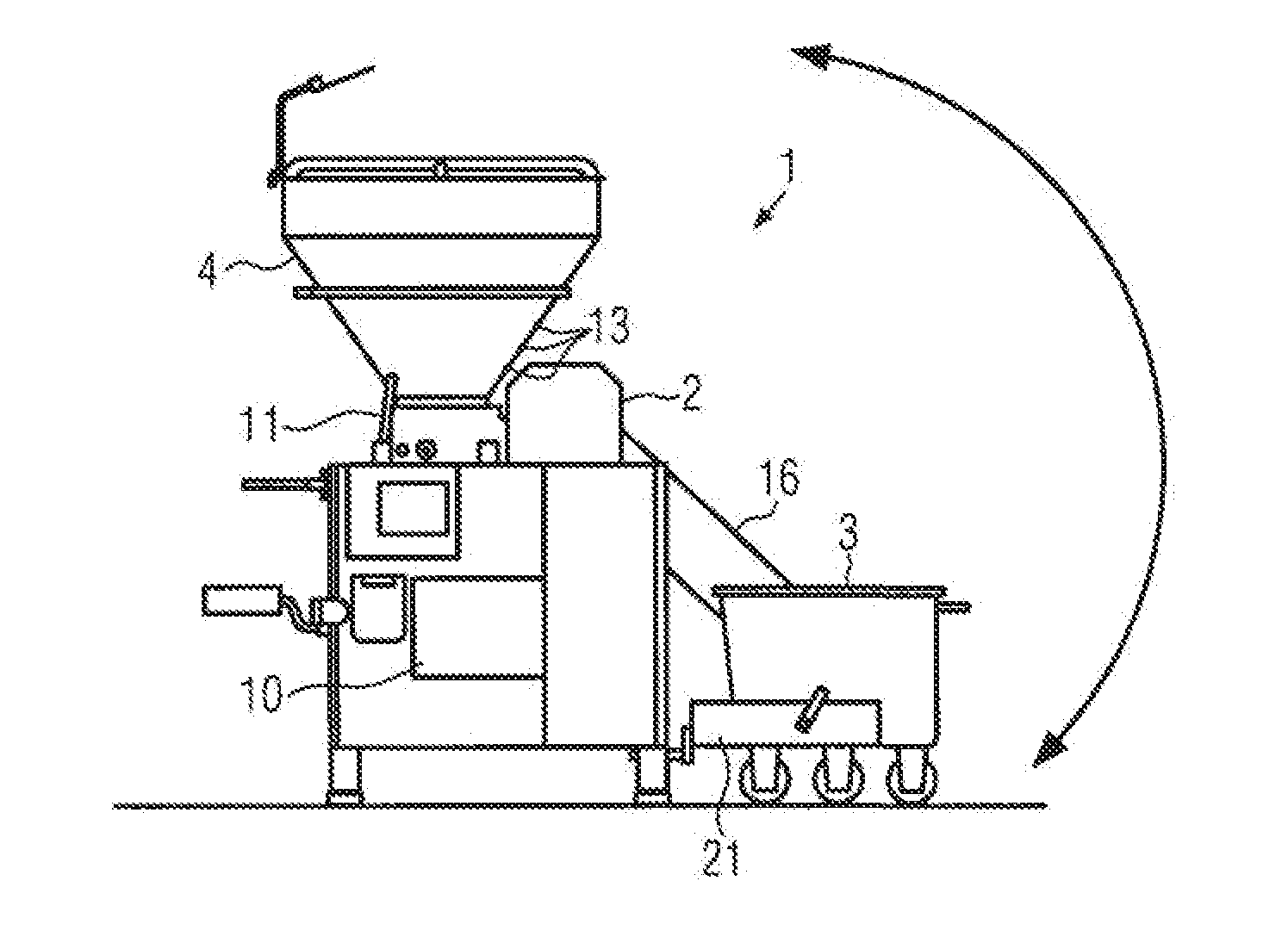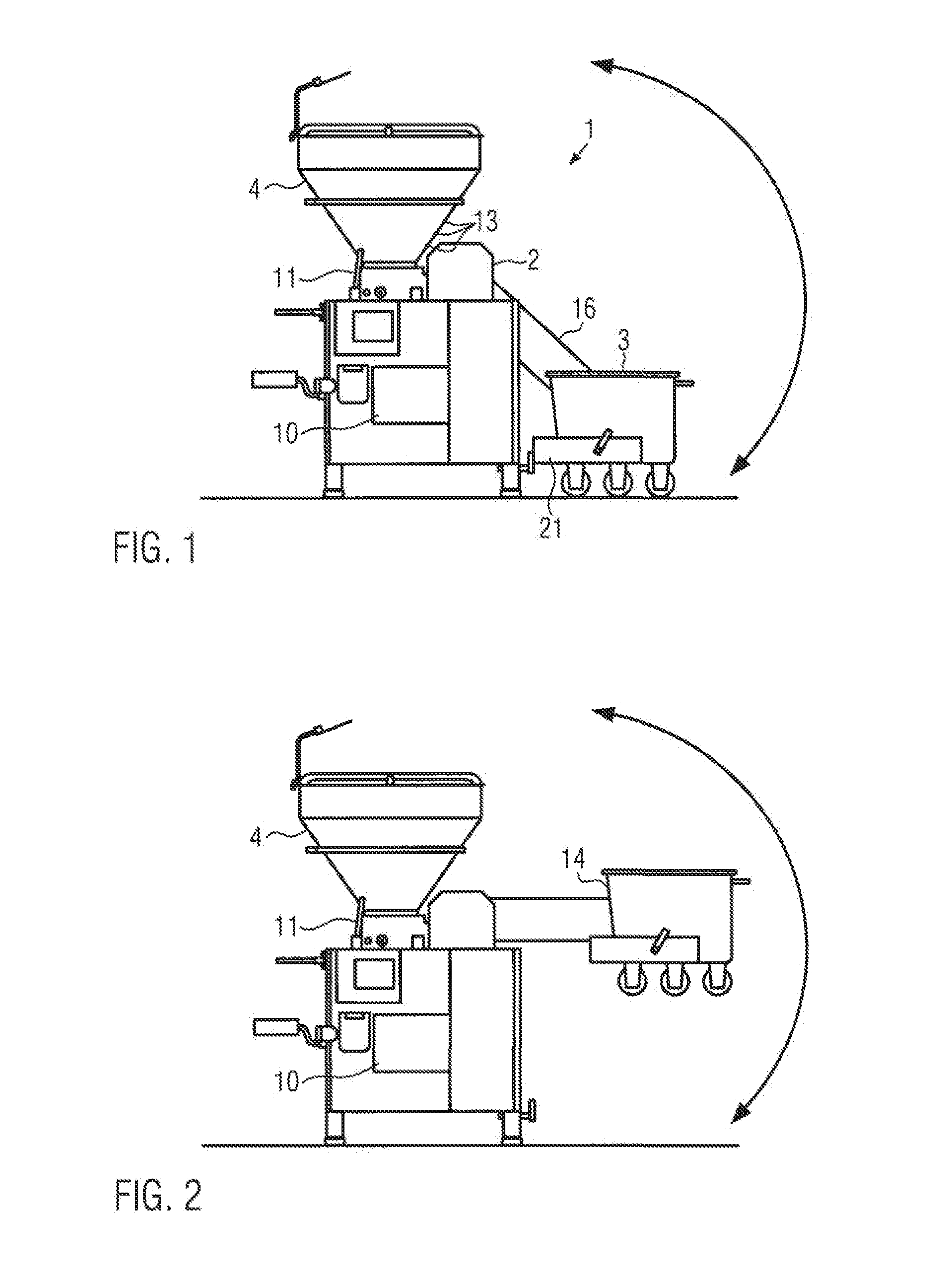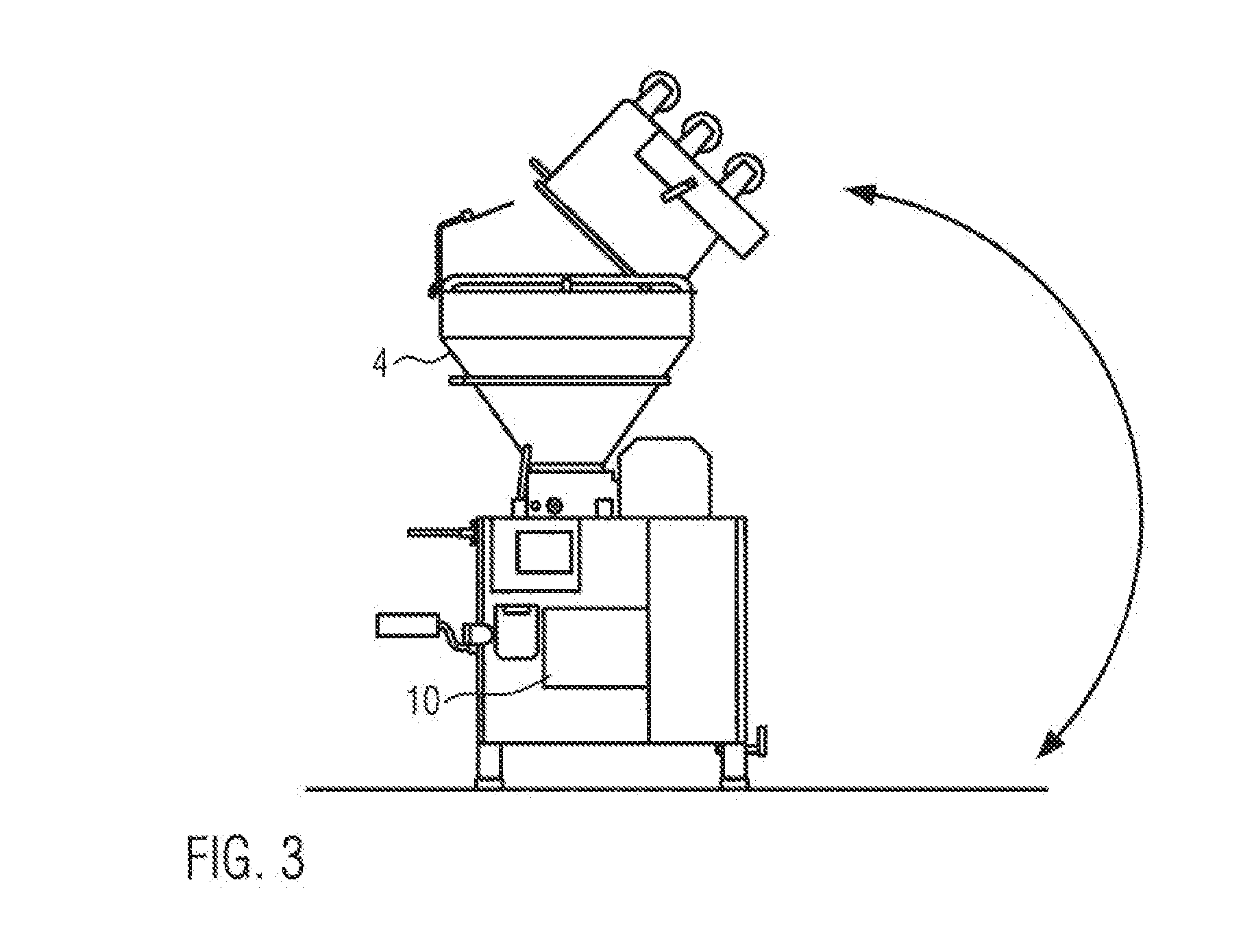Device and method for loading a food processing machine, in particular a filling machine or a cutter, with food
a technology of food processing machine and loading device, which is applied in the field of devices and methods for loading food processing machine, can solve the problems of reducing the risk of damaging objects by collision with lifting means, reducing the danger of a person located in the working range of lifting means, and saving energy costs. , to achieve the effect of minimizing idle and waiting time and operating safely
- Summary
- Abstract
- Description
- Claims
- Application Information
AI Technical Summary
Benefits of technology
Problems solved by technology
Method used
Image
Examples
Embodiment Construction
[0028]FIGS. 1 to 3 and FIG. 4 show a preferred embodiment for loading a food processing machine with an arm lifting means. However, a pole lifting means is equally suited. In this embodiment, the lifting means 2 is connected to the machine 11, here a filling machine. However, the device could also be designed as an independent unit. The device is equally suited for loading a cutter.
[0029]The device comprises a container 3 for receiving food, e.g. sausage meat. The container has a filling volume, for example, within a range of 100 to 1000 liters. Here, the container 3 is embodied as a mobile trolley provided with rollers 5. The container 3 is fixed in a not specially represented receiving unit 21 of the lifting means 2 such that it is securely locked against falling out. This can be done by the container locking into place, for example, in a receiving cage not represented more in detail. A sensor can be provided which detects whether the container 3 is arranged and locked in the moun...
PUM
 Login to View More
Login to View More Abstract
Description
Claims
Application Information
 Login to View More
Login to View More - R&D
- Intellectual Property
- Life Sciences
- Materials
- Tech Scout
- Unparalleled Data Quality
- Higher Quality Content
- 60% Fewer Hallucinations
Browse by: Latest US Patents, China's latest patents, Technical Efficacy Thesaurus, Application Domain, Technology Topic, Popular Technical Reports.
© 2025 PatSnap. All rights reserved.Legal|Privacy policy|Modern Slavery Act Transparency Statement|Sitemap|About US| Contact US: help@patsnap.com



